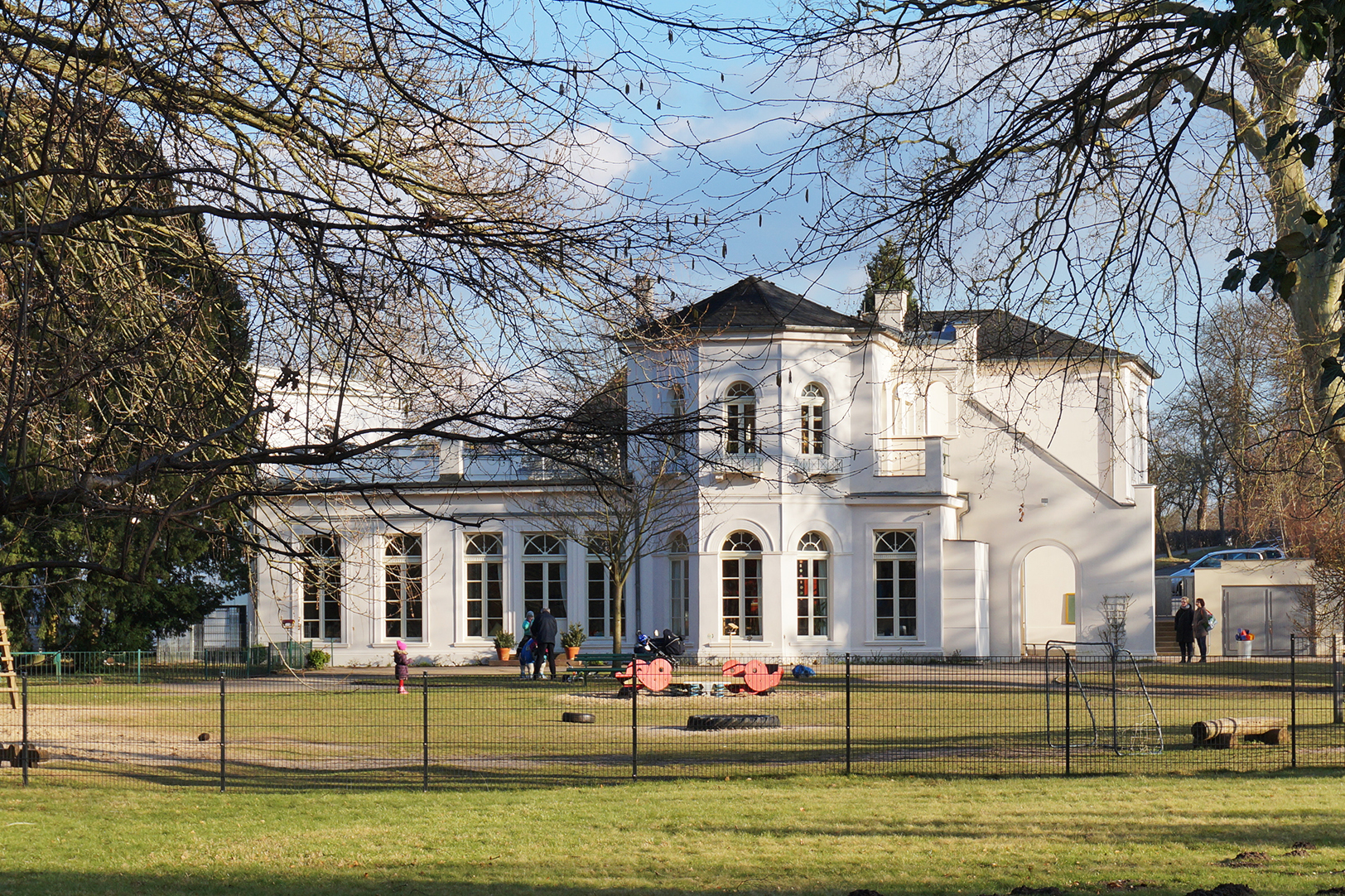The Greenhouse and the Cavalier’s house are located at the eastern end of the palace gardens.
This part of the garden is designed in the style of an English landscape garden. The statue of Grand Duchess Alexandrine erected not far from the Greenhouse in 1907 refers to the owner of the building; the statue faces the part of the garden favored by the Duchess.
The similarities in design with the Collegiate Building I, which was also designed by Demmler, are clearly evident through the selection of very similar classicist stylistic elements.
In her will, Grand Duchess Alexandrine decreed that the Greenhouse may only be used by social institutions. For a long time it functioned as an orphanage and now serves as a kindergarten.
Construction and cubature
In 1838, Carl Heinrich Wünsch redesigned the former gardener's house into the Greenhouse. It was extended by a plastered, two-story solid structure with an apse on the west and east sides of the building and supplemented by an annex on the south side by Georg Adolph Demmler.
The roof of the one-story structure on the north side, which follows the street line with its facade, serves as an exit on the upper floor. On the south side there is another exit on the upper floor, this is framed by the short wing of the building and a lateral wall, which formerly supported the roof of the winter garden.
Another extension of the Greenhouse dates back to 1934. This involved a reconstruction on the east side to make the building more suitable for residential use. The roof of the now L-shaped structure is designed as a flat pitched hip roof.
The design language of the facade shows classicistic style elements. The roof and the facade are accentuated by an eaves cornice and a circumferential belt cornice, which merges into the eaves cornice of the single-story part of the building.
The division of the rooms shows the typical design principles of neoclassicism by consistently maintaining symmetry. The fixtures for the conversion to a kindergarten have a modern design and are clearly recognizable as additions.
The different construction phases of the building can be seen in the windows. The one-story portion of the Greenhouse features rectangular windows with transoms. The fenestration and round arch attempted to align the windows with the structure of the other parts of the building. These have round-arched windows with muntins and fixed fanlights. The window reveals are profiled and are sometimes round-arched or rectangular, according to the shape of the window. The outer sills are of the same height all around, but individual parts of the window opening are closed off in a lower wall thickness, flush with the facade. This was chosen to allow a uniform opening height.
The extension on the south side from the 1930s is based on the design principles of classicism - including the use of blind windows to preserve the symmetry of the facade.



